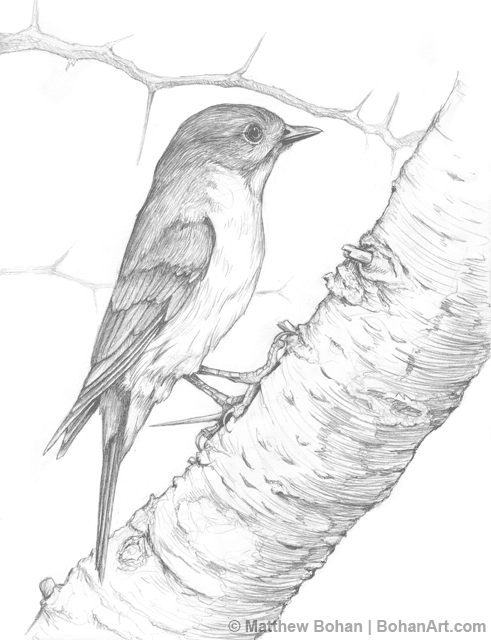Harvestman Pencil Sketch p24
Harvestmen are an interesting creatures. Growing up we always called them daddy longlegs. The scientists call them Opiliones. Although they are arachnids, they are not spiders, despite sharing many superficial characteristics. Both have eight legs and two body segments. In the case of the harvestmen, the two body segments appear fused, but they are not. They just have a very wide connection making them appear as one. Arachnids have venom and silk glands, both of which are lacking in the Opiliones. Most spiders have eight eyes, while the harvestmen have only two.
Harvestmen are easy to find in shady and damp places where they are moving about hunting smaller arthropods like mites to eat. They also scavenge for decaying plant and animal material. On close observation, these are really fascinating animals. Gently handling them is fun for kids of all ages. Be careful though, they are liable to drop a leg if you get rough. This specimen, which I photographed in the backyard, was missing a few limbs but seemed to be getting along just fine.
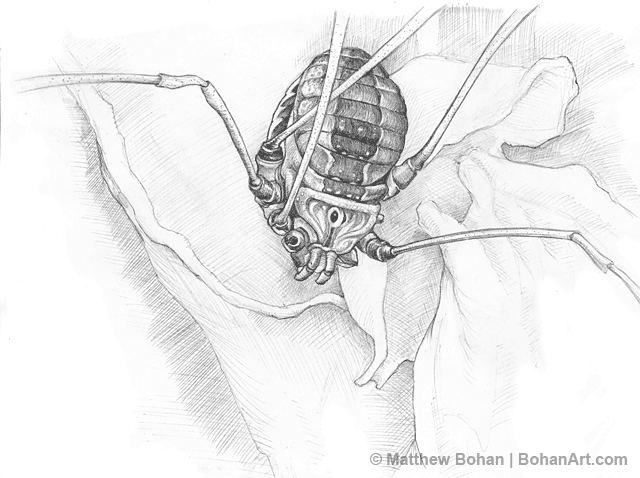
Catbird Pencil Sketch p23
There are certainly a lot of interesting backyard birds. Of them, I’m quite fond of catbirds. They regularly visit to the jelly feeders that we started for the Baltimore Orioles. We have been surprised at the number of birds that eat the grape jelly. Orioles, Catbirds, Titmice, Chickadees, American Robins, Downy and Red-bellied Woodpeckers have all come to eat the sugary treat. It seems like the Baltimore Orioles and Catbirds carefully observe each other, because as soon as one of them finds the jelly at the beginning of the season the others come streaming in. The Orioles can be aggressive toward any other bird near the jelly, while the catbirds seem much more tolerant, to be anthropomorphic. Unlike their mammalian namesake, catbirds seem to be crazy about water. They take dips everyday in the birdbath out our kitchen window, sometimes more than one at a time. Although they are common, they are great fun to watch and enjoy. This sketch is from photos taken out of our kitchen window.
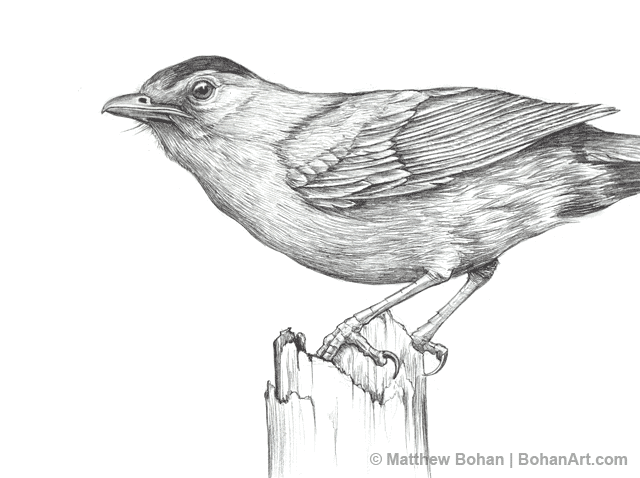
House Wren Pencil Sketch p22
House wrens cause me some conflict. They are undeniably cute. These tiny birds also seem intelligent, resourceful, adaptable and curious. Those are good qualities. At the same time, they are bullies having some nasty habits. The little squirts have a big Napoleon Complex. While they will nest virtually anywhere, sometimes even in tin cans and boots sitting in open sheds, they like to take over bluebird boxes. They will frequently poke holes in the bluebird eggs and throw them out of the nest. House wrens will even do this to the nest boxes in the area, not just the ones they are laying in. Resourceful, intelligent and adaptable, yes… but kind of nasty if you count yourself among the fans of bluebirds.
Our property used to be really good for bluebirds. We’ve had them nest in our boxes many times. In the past 8 years, the field nearby has started to move away from “meadow” and transitioned toward shrubs and trees. That has tilted the balance in favor of the wrens that prefer that habitat. This year I took down the bluebird boxes because the wrens were taking everything over. It is disheartening to be watching and photographing the beautiful bluebirds every day, counting their eggs, only to come out one morning to find that the wrens are all over the box with the bluebird eggs broken and thrown on the ground. Having the meadow taken over by shrubs and trees has been bad for the bluebirds, but I’ll try to look on the bright side and enjoy the higher number of warblers we are getting in the yard. I do miss seeing the bluebirds every day.

Swamp Milkweed Leaf Beetle Pencil Sketch p21
At first glance, the milkweed leaf beetle looks like a ladybug on steroids. After that cursory look, you can appreciate that it has a more dome-like abdomen, larger antennae, and is missing the white dots on the side of the thorax. Although the spots are highly variable, they tend to be less “dotty” than a ladybug and are more symmetrically “blotched.” How about that for a non-scientific description? The elytra (hardened forewings which cover the more fragile hindwings used for flight) are highly dimpled. Oh no, that sounded like science again for a second.
Like monarch butterflies, milkweed bugs, and red milkweed beetles that feed on plants in the milkweed family, they are toxic. Similar to the other insects that use the milkweeds as a host, these handsome beetles warn of their toxicity with bright orange and black colors. I found this specimen on a swamp milkweed we have growing our garden.
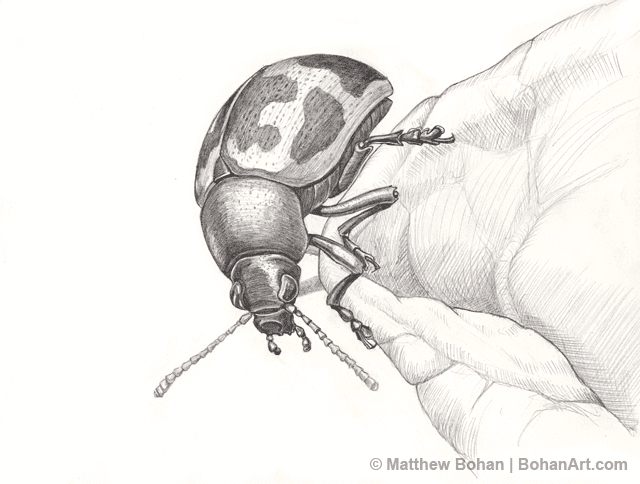
Metallic Green Snout Beetle Pencil Sketch p20
Bigger isn’t always better. These tiny weevils are fascinating despite their minuscule size. It is easy to overlook these 5-6mm beetles. I didn’t come across these much as a kid growing up in rural western New York. In Michigan they are a somewhat invasive species introduced from Europe. When I was a bit younger and had fantastic vision I could blow an easy hour staring at one of these little jewels walking on my finger tip. Now I use a hand lens, dissecting scope, or more often a macro lens to take in the spectacular detail. Their large round eyes safely put them in the cute category. To push it over the top, they are covered with thousands of metallic green scales… they are carrying around more “bling” than Mr T. A pencil sketch doesn’t really capture their outrageous metallic color, so I’ll include a few of my photos as well.
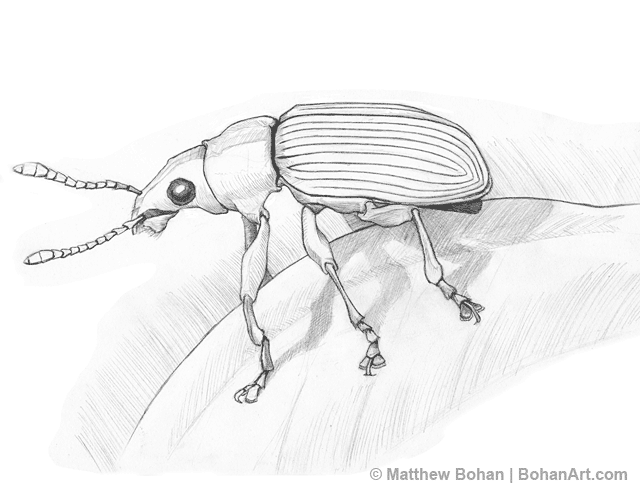
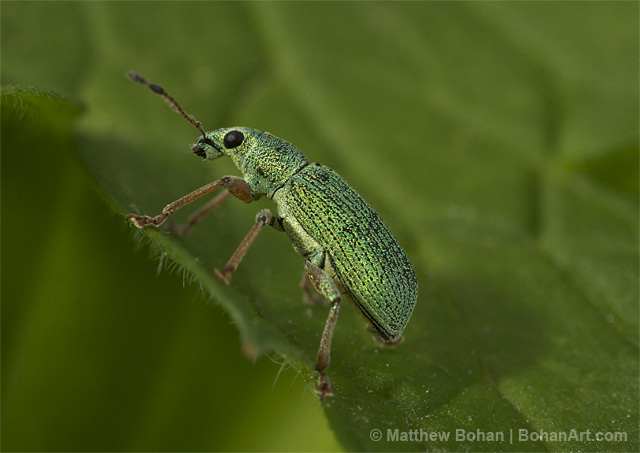
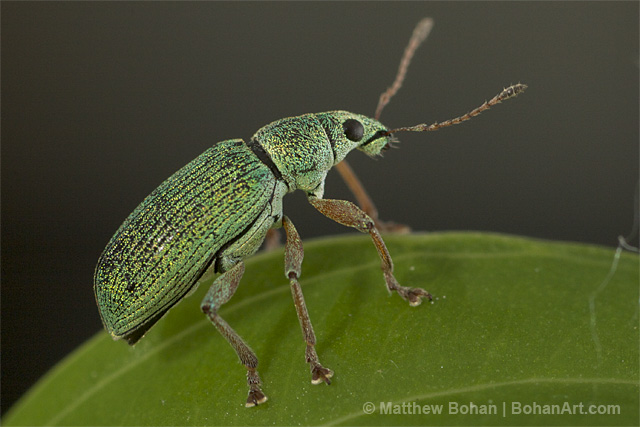
Northern Cardinal Pencil Sketch p19
One of the more recognizable birds in North America has to be the Northern Cardinal. Almost everyone can identify the male. They seem to be plastered on every bag of bird seed, so they are a popular marketing tool as well. People like having these beautiful birds at their feeders. The sight of a brilliant red bird in the middle of a drab winter day can certainly brighten your spirits, even if it is a common species.
I’ve heard from bird banders that their bill is not just good for cracking sunflower seeds… it can also give a really nasty nip. There is nothing wrong with protecting yourself!
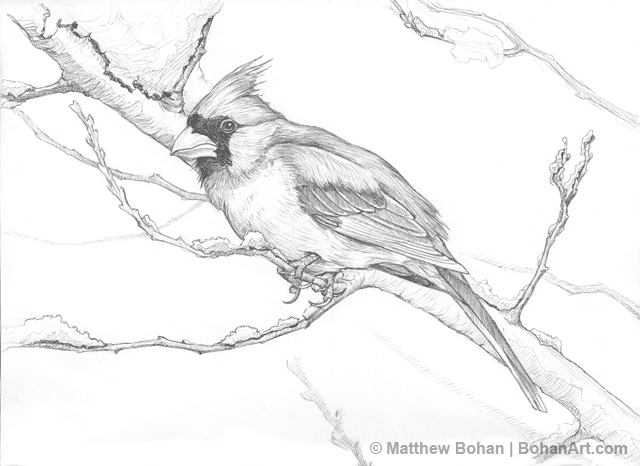
Cedar Waxwings on Viburnum Pencil Sketch
As a homeschooling Dad I try to keep some of our studies on the sly. We don’t really stop our studies when all the other kids are on break… instead we do what I call the “Summer Slow” where we try to keep our studies wrapped up by lunch. That keeps us making progress in critical things like math which are easy to forget, but it leaves us additional time for fun projects, extra sports, art, music and other great things.
Yesterday, the three of us decided to do a one hour “BioBlitz” as part of our school day. Our goal was to find as many different animal species as possible in one hour. We couldn’t identify everything to species, but would tally each unique specimen. We broke things down by vertebrates, invertebrates, then further down into mammals, birds, amphibians, reptiles, arthropods, arachnids, insects, isopods, mollusks and so on. If we included plants we wouldn’t have been able to write fast enough to take it all down! In the end we had a great time getting 94 species! We had two definite high lights… a boldly patterned, baby milk snake was under the stones in the garden. It was thinner that a typical # 2 pencil, but a whole lot prettier…and faster. It was long gone by the time I got the camera. The other great find was a nest of cedar waxwings well hidden in a tree by our mailbox. I’ve come across cedar waxwing nests before and it is always an exciting find.

White-crowned Sparrow on Cherry Transparent Watercolor Step-by-step
In mid-Michigan the White-crowned Sparrow’s arrival usually coincides with the blooming of the cherry trees. This year we had an unusually early spring and I think many of the white-crowns bypassed their usual mid-Michigan stop on their way north.
I really enjoy the pretty call of the White-crowned Sparrow and look forward to hearing it every spring. At Christmas we were given a book on the birds of the Arctic National Wildlife Refuge which came with a CD full of recordings of the ambient sounds there. The call of the White-crowned figures prominently in many of the recordings. The kids will often leave that CD playing for our parrot who likes the chatter of the birds. This March, I kept getting fooled by the White-crowned Sparrows on the recording, thinking it was coming from early ones out our windows. Of course they weren’t there yet. After a while I smartened up to the fact that we also don’t have any Willow Ptarmigan calling in our backyard!
This is a 7 x 11 inch transparent watercolor on Arches 140lb HP paper.


Chipping Sparrow on Redbud Pencil Sketch p18
Sparrows are underrated. To most people they are just LBBs–little brown birds. Sure, they aren’t the flashiest of birds, but they have a subtle beauty about them. Some are downright beautiful if you only take the time to look carefully with some good binoculars. On top of that, many have interesting and pretty calls. The chipping sparrow is incredibly familiar. They seem to be cheery little birds.
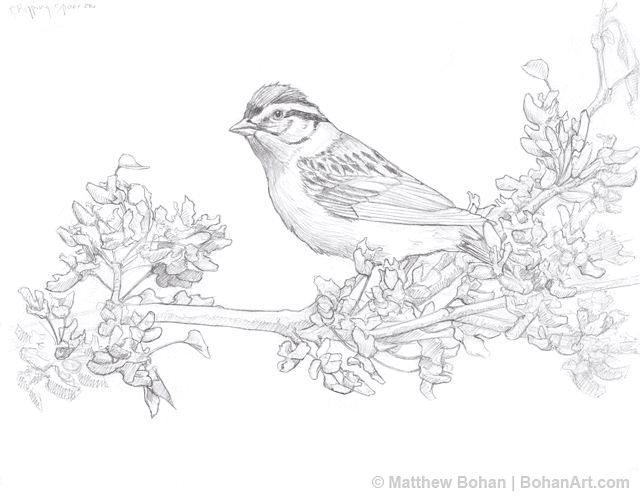
Male Eastern Bluebird on Hawthorn Pencil Sketch p17
This male Eastern Bluebird was aggressively defending his nest from his own reflection in our shed’s window. I snuck inside with the tripod and 400mm lens to get some shots. He came in incredibly close. After bagging a ton of photos, I put paper up in the windows to cut down on the reflections while they nested. That way he could spend his time more usefully.
